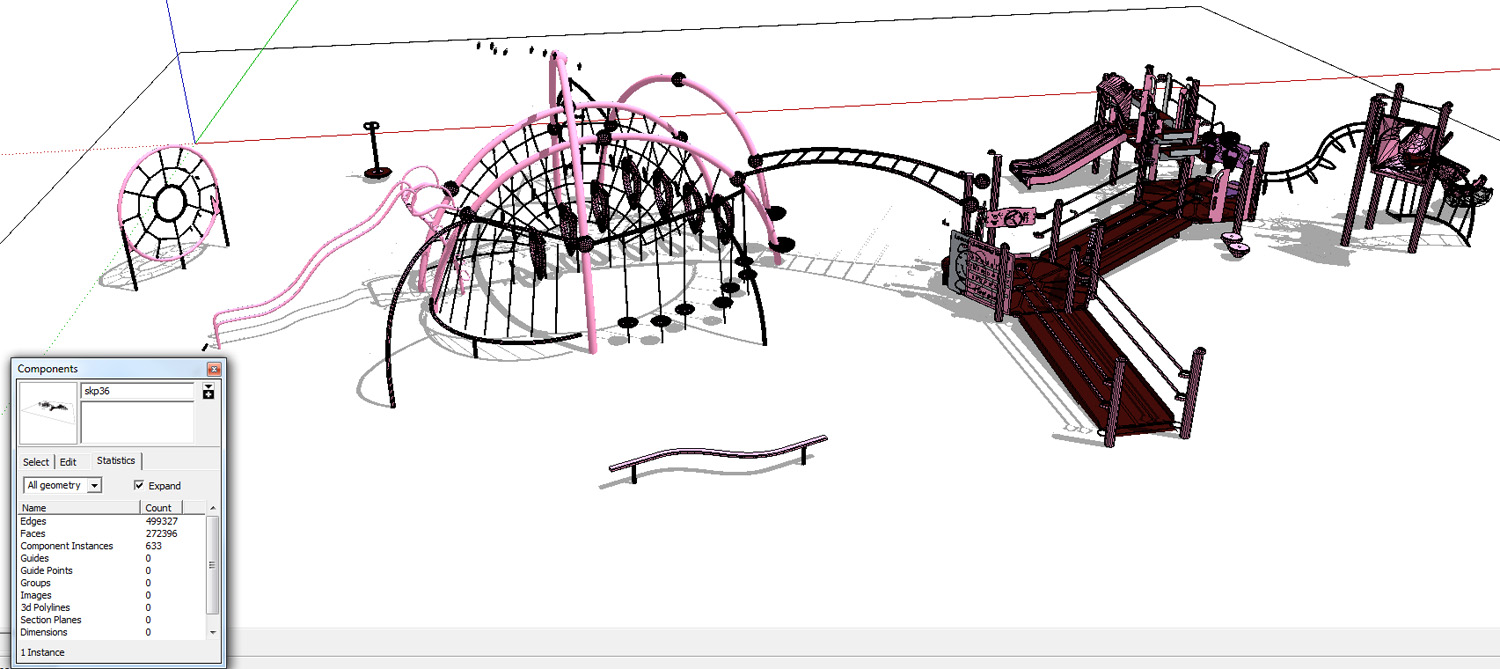Try out the new "Pacman" option in google maps  (lower left corner after you have any address pulled up in maps)
(lower left corner after you have any address pulled up in maps)
-Atrian
Try out the new "Pacman" option in google maps  (lower left corner after you have any address pulled up in maps)
(lower left corner after you have any address pulled up in maps)
-Atrian
I've also had this happen frequently.
It may be due to the dividing line not being completely closed. Try drawing lines from the dividing edge to the outer edge, to hone in on where the gap is.
If the above suggestion from myself or others do not work, I've also found that it's sometimes due to distance of the model from the origin or if the model is too small, messing with Sketchup's calculations. Try moving it back to the origin (changing axis location does not move the origin) or scaling the model up by 1000 (and back down after you're done working on it, if needed).
@jga said:
@hkla said:
Decrease the minimum on Network licensing.
How low? 2 would be nice. I have 6 potential users, who may jump between 7 computers depending on the task (one computer is a render or complex model computer for all to use). However, each user only uses the program in sparse bursts, only up to 3 at once, but I'm not allowed to have a network because 50 seats in a small office is insane. This becomes very annoying.
I will gladly pay more per seat to unlock network licensing.
We have a 3 user network license, originally purchased for version 6. I think new copies are still available.
My wish - restore the fileserver based network license sharing, rather than the new web based version, as per my gripe on http://sketchucation.com/forums/viewtopic.php?f=15%26amp;t=59771
I've been trying to get network licences since version 8 (and I've wanted just 3 as well). I've been on the phone with multiple customer service reps of varying levels of expertise, and all have told me it isn't possible unless I buy 50. Maybe it was discontinued after 6 and you've been able to be grandfathered into the new standards? If not, I would love to know who I need to talk to so I can upgrade our licenses to network.
-Amanda (hkla)
I've tried re-creating the cameras using the advanced camera tools, but the tool was not behaving as expected. I think the camera tool may also be affected by the distance from the origin.
Any other ideas? Are there any rubies out there that might help?
That looks very promising. Thanks, Alan. I'll look into Deep Exploration some more and get myself a free demo to try out.
Thanks for the tips, Brodie. I tried out Whaat's polygon reducing script, but the geometry is just not suited for it. There are WAY too many edges (~30k in a simple pole with a base, 3 dump buckets and water), and a lot of places where only 1 face next to an edge - I believe Whaat mention this will mess the script up and that the model had to be a completely closed off volume. I tried to just do the pole's inside faces, and it never seemed to finish processing, even overnight. But thanks for the heads up, I'll probably end up using that in my own models.
Luckily play equipment tends to come in simple colours, so that's covered.
I ended up not reducing the polygons at all and just smoothing. Thanks for reminding me that I can right click and choose to smooth the whole model. I was thinking I had to do it all with the eraser tool. I'll just power through the lag.
Kmead, I think that is what has to happen, just remodeling from Sketchup. Unfortunately our office doesn't have the budget to do it so I'll try and get into more discussions with the supplier for them to produce it. Although, since they've already made it in their other modelling program they'll likely try and keep searching for a better conversion method.
I've attached the dump bucket example in case anybody wants a crack at figuring out a quick conversion method without remodelling.
The main reason I'm looking for this instead of sticking with the remodelling method is that once I get into Playground structures, it's huge - around 500k edges, and every one we do is different to suit conditions. It'd be crazy to remodel it every time, or even stick templates together twice for their 3ds model and my sketchup. I'll keep looking around and post here if I find something.
Thanks to the both of you for your suggestions, and the great simplifying Ruby.

I'm working with a splashpad supplier in our park design and asked for sketchup models of the splashpad elements for use in our model of the park.
The only files they have are .3ds and a 3D .dwg. I imported and found that the max version is slightly smaller, and retains the materials (simple red/blue/yellow colours). Problem is that the pole of the model they sent is a mesh, along with the dump buckets and falling water (in both versions).
My question is: are there any best practices when converting a meshed 3ds into sketchup?
For instance:
Thanks!
A